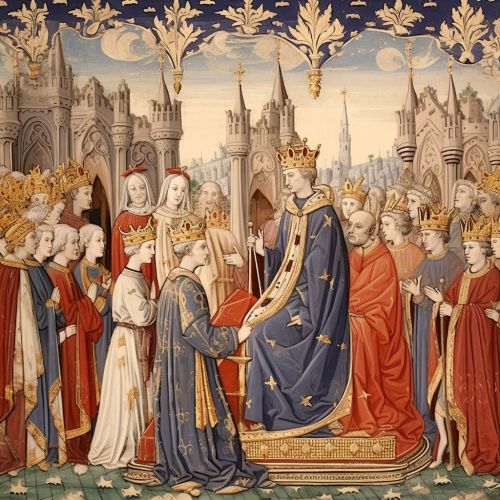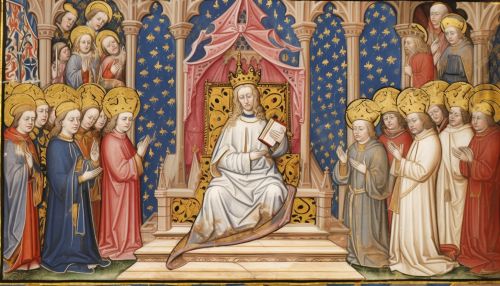Kingdom of Poland (1025–1385)
History
The Kingdom of Poland, also known as the Polish Kingdom or the Crown of the Kingdom of Poland, was a medieval Polish state established in 1025. The Kingdom was founded by Bolesław I, who was crowned as the first King of Poland. The Kingdom of Poland lasted until 1385, when it entered into a personal union with the Grand Duchy of Lithuania through the Union of Krewo.
Establishment
The Kingdom of Poland was established in 1025, following the death of Bolesław I's father, Mieszko I, in 992. Mieszko I had been the ruler of the Polans, a West Slavic tribe that eventually became the Polish nation. Bolesław I, his son, continued his father's efforts to unify the various Slavic tribes under his rule and to spread Christianity among them. He was crowned as the first King of Poland by the Archbishop of Gniezno, thus marking the beginning of the Kingdom of Poland.


Political Structure
The Kingdom of Poland was a monarchy, with the King as the head of state. The King was assisted by a council of nobles, known as the Senate, which advised him on matters of state. The Kingdom was divided into provinces, each governed by a Voivode, who was appointed by the King. The Voivodes were responsible for maintaining law and order in their provinces, collecting taxes, and leading the provincial armies in times of war.
Religion
Christianity played a significant role in the Kingdom of Poland. The Kingdom was predominantly Catholic, with the Roman Catholic Church having a significant influence on the state's affairs. The Church was instrumental in the spread of literacy and education in the Kingdom. The Archdiocese of Gniezno was the most important ecclesiastical province in the Kingdom, with the Archbishop of Gniezno being the primate of Poland.
Economy
The economy of the Kingdom of Poland was primarily based on agriculture, with the majority of the population being peasants. The Kingdom was known for its fertile soils, which were ideal for growing crops such as wheat, rye, and barley. Trade also played a crucial role in the Kingdom's economy, with the Kingdom being a part of the Hanseatic League, a commercial and defensive confederation of merchant guilds and market towns in Northwestern and Central Europe.
Culture
The culture of the Kingdom of Poland was influenced by its Christian faith, its Slavic heritage, and its interactions with neighboring nations. The Kingdom was known for its literature, music, and art, which were heavily influenced by Christian themes. The Kingdom was also known for its architecture, with Romanesque and Gothic styles being prevalent.
End of the Kingdom
The Kingdom of Poland came to an end in 1385, when it entered into a personal union with the Grand Duchy of Lithuania through the Union of Krewo. This union was brought about by the marriage of Jadwiga, the Queen of Poland, and Jogaila, the Grand Duke of Lithuania. The union marked the beginning of the Polish-Lithuanian Commonwealth, a bi-federation of Poland and Lithuania ruled by a single monarch.
